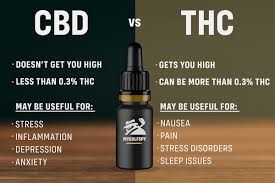“Stay off the weeeeeeed” – Steven A. Smith
There is a general lack of understanding surrounding the topic of marijuana and cannabinoids. Somethings most don’t know is the body naturally produces endocannabinoids that activate different CB (cannabinoid) receptors throughout the body. While it is true that the active ingredient in marijuana, THC, activates these receptors, there are many other ligands that do the same thing, most naturally produced in our body. There has been a recent surge in the use of medical marijuana and its derivations to treat complex medical disorders and diseases. CBD is growing increasingly popular for a plethora of different uses ranging in conditions from trivial to extreme. Taking a look at what we know and don’t is a great way to start an educated and engaging conversation around a lightning rod topic.
Endocannabinoids are signaling molecules in the body that help regulate various body processes. Among the eCB’s, the most common are AEA and 2-AG. These ligands are agonists for CB-1 and CB-2 receptors but bind CB-1 receptors with higher affinity. The role of cannabinoid receptors is increasingly under investigation as we find they’re interactions on several neural function is high. CB-1 receptors have an impact on many disorders in the CNS including many neurodegenerative disorders such as Huntington’s disease, multiple sclerosis, and Alzheimer’s.
While being different diseases HD, MS, and AD patients have all shown positive responses to treatment with CB-1 receptor agonists like THC or CBD.

Aside: what is CBD? It seems to be talked about like a magical cure all by some. Does it make you high, and why can you buy it nearly everywhere? CBD, or cannabidiol, is one of the active chemicals in Marijuana, the second most active behind THC actually. While the binding affinity is not particularly high for either CB-1 or CB-2 receptors it does bind to certain serotonin receptors which explains its effect on anxiety, nausea, vomiting, and the perception of pain.
CB-1 receptors in particular are involved in many different functionalities of neurons and the CNS. In patients with Multiple Sclerosis, CB1 agonists are found to control inflammation. People who suffer from Huntington’s Disease often lose control of motor functions and these symptoms have been shown to mostly be alleviated by CB-1 agonists in limited studies. Similar positive responses have been seen in Alzheimer’s Disease, traumatic brain injuries, and other conditions involving a dysfunction in the CNS or peripheral neurons. However, research is pretty limited at the time as the field is very young.
Continued research is essential for expanding our knowledge of this complicated signaling pathway. There are cannabinoid influences in nearly all of our bodily functions. It is good to erase our preconceived notions on the term cannabis. There are proven results for treating complex diseases with cannabinoid receptor agonists. This doesn’t mean we should all be smoking marijuana as there are many other compounds involved and the research isn’t conclusive on their affects. However, research into THC, CBD, and other external cannabinoids is an important step in finding solutions to some of our most perplexing medical issues.

